Understanding and Caring for Wraps
Loomstate Wraps: What a difference a wash makes!
‘Loomstate’ describes cloth that has come off the loom having been woven, but still requires ‘finishing’ to complete the process. Until the cloth has been ‘finished’ it will still retain some of the tension that it was under during the weaving process, and the cloth won’t feel or behave the way it was intended to.
Finishing can be an industrial process, but for the purpose of wraps it can just involve a quick trip through a home washing machine. Whilst receiving ‘finished’ wraps can feel nice, it also increases the carbon footprint of the cloth the price you pay. Also even factory finished wraps will feel nicer after a proper wash, so washing loomstate wraps yourself is good on many counts.
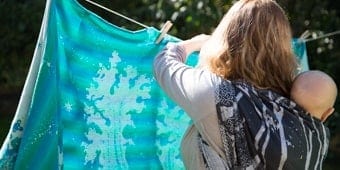 Some wraps will only need one first wash in order for you to feel the difference, whilst other may need a couple of initial washes (e.g. wool often needs two or more washes to remove the natural processing oils and become lovely and soft). We send our wraps out in loomstate for you to wash at home rather than putting them through mechanical scouring and tenting (which would only do the same job as your washing machine would do). Wrap cloth doesn’t need any extra treatments to make it soft and suitable for purpose, and it isn’t treated with chemicals or agents. We use fibre reactive dyes that bond to the yarn fibres on a molecular level, so there is nothing to wash out of the cloth, other than the dust and dirt that it has collected on route from yarn cone to wrap.
Some wraps will only need one first wash in order for you to feel the difference, whilst other may need a couple of initial washes (e.g. wool often needs two or more washes to remove the natural processing oils and become lovely and soft). We send our wraps out in loomstate for you to wash at home rather than putting them through mechanical scouring and tenting (which would only do the same job as your washing machine would do). Wrap cloth doesn’t need any extra treatments to make it soft and suitable for purpose, and it isn’t treated with chemicals or agents. We use fibre reactive dyes that bond to the yarn fibres on a molecular level, so there is nothing to wash out of the cloth, other than the dust and dirt that it has collected on route from yarn cone to wrap.
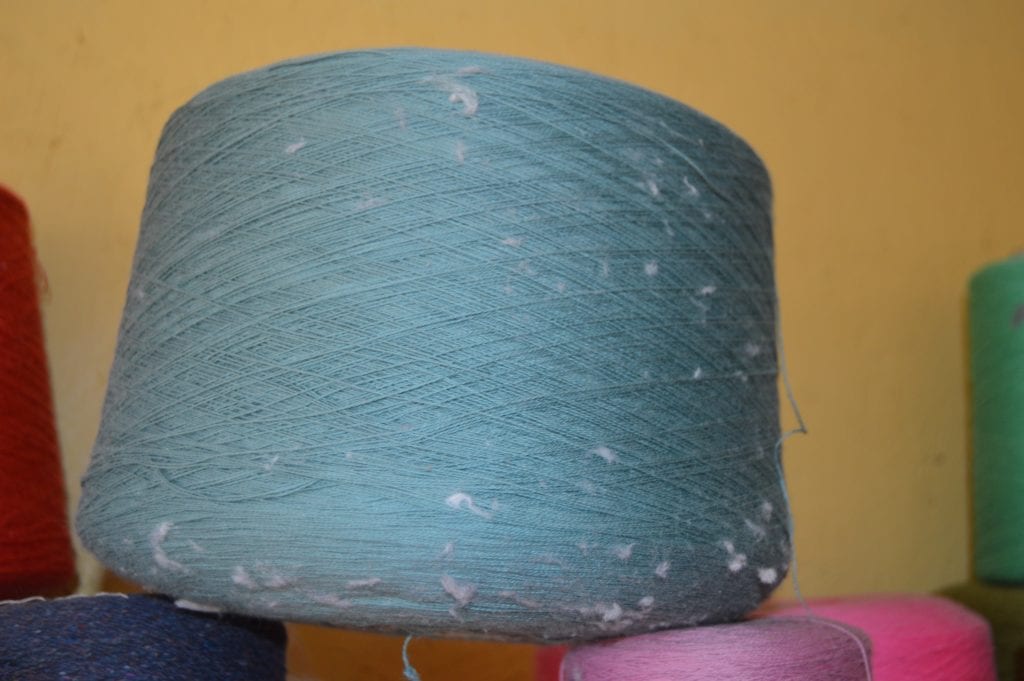 Weaving is a very dusty process; friction from the loom rubs off tiny natural fibres into the air, and static sucks them back into the cloth. Like all new fabrics, wrap cloth should be washed to remove this lint and dust.
The warp threads are stretched tight onto the loom, so that the weft can be passed from side to side through them all. Some of this tension is retained once the cloth is cut from the loom, the warp and weft threads remain taut and quite isolated from each other, with larger spaces between them all. When we see a wrap ‘bloom’ after washing, we are seeing the fibres all pull together to find their natural positions. Some of the length and width of the cloth is lost and converted into an airy thickness. We cut our wraps slightly longer than the desired length to allow for a little loomstate shrinkage on the first wash.
Weaving is a very dusty process; friction from the loom rubs off tiny natural fibres into the air, and static sucks them back into the cloth. Like all new fabrics, wrap cloth should be washed to remove this lint and dust.
The warp threads are stretched tight onto the loom, so that the weft can be passed from side to side through them all. Some of this tension is retained once the cloth is cut from the loom, the warp and weft threads remain taut and quite isolated from each other, with larger spaces between them all. When we see a wrap ‘bloom’ after washing, we are seeing the fibres all pull together to find their natural positions. Some of the length and width of the cloth is lost and converted into an airy thickness. We cut our wraps slightly longer than the desired length to allow for a little loomstate shrinkage on the first wash.
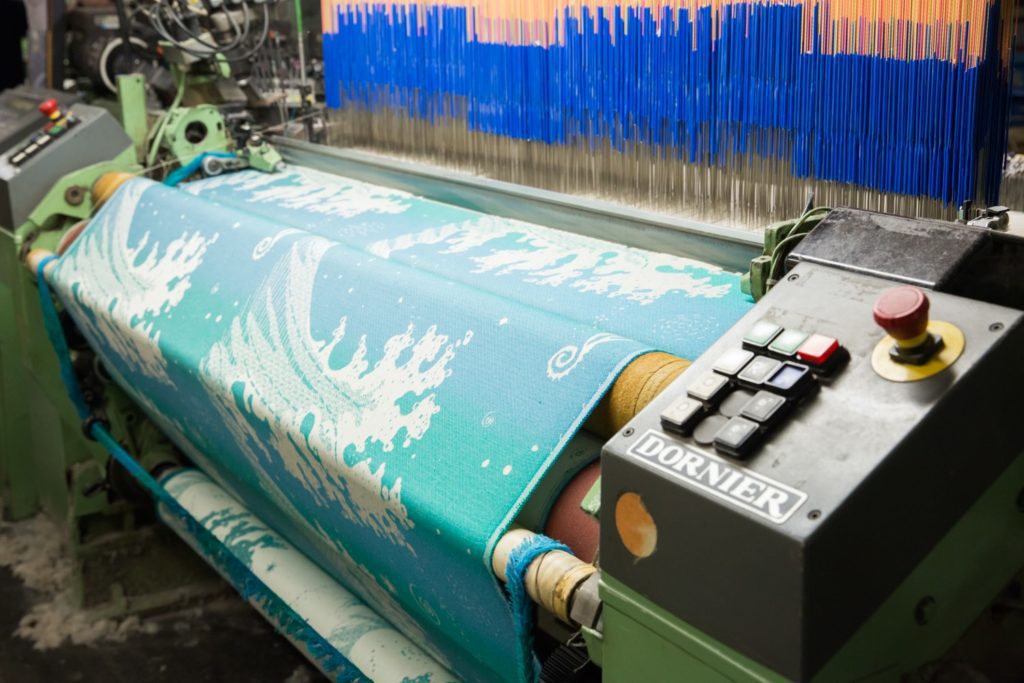 Sunfade Cirrus Festival is an excellent example of why a wrap should be washed. When I received my sample wrap my first impression was that it looked beautiful, but felt thin and slippery. I was actually a little concerned that it didn’t feel like a Firespiral.
My next move was to put it in the wash, and after a line dry that I finished off in the tumble dryer, wow, what a difference. It is now so marshmallowy soft and airy and fluffy!
Here are a few photos of my size 7 (warp face out) , and an unwashed 7 (weft face out) for comparison. They are folded in exactly the same way.
Sunfade Cirrus Festival is an excellent example of why a wrap should be washed. When I received my sample wrap my first impression was that it looked beautiful, but felt thin and slippery. I was actually a little concerned that it didn’t feel like a Firespiral.
My next move was to put it in the wash, and after a line dry that I finished off in the tumble dryer, wow, what a difference. It is now so marshmallowy soft and airy and fluffy!
Here are a few photos of my size 7 (warp face out) , and an unwashed 7 (weft face out) for comparison. They are folded in exactly the same way.

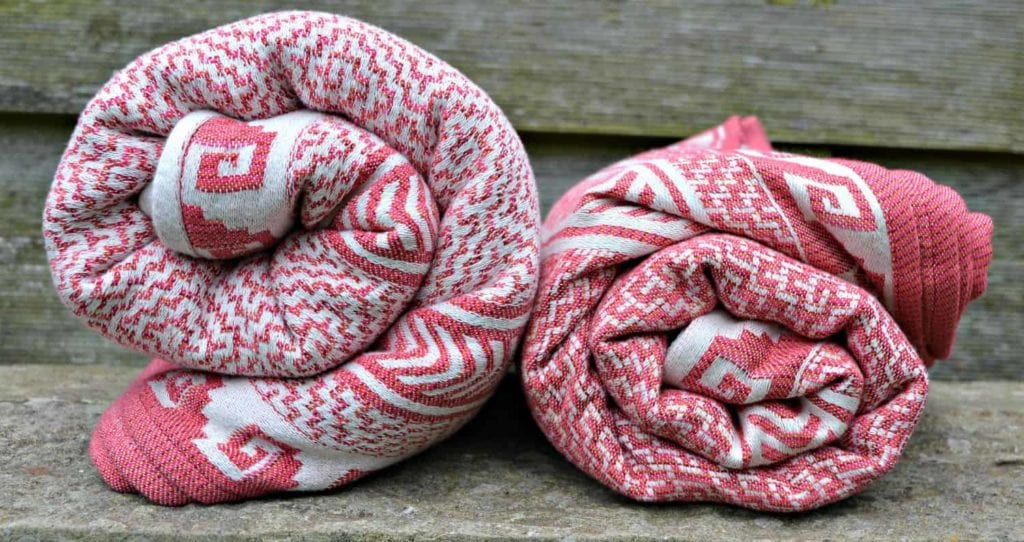 In this picture you can see the flatness of the cream warp threads in the unwashed wrap and the texture of the same threads in the washed wrap.
In this picture you can see the flatness of the cream warp threads in the unwashed wrap and the texture of the same threads in the washed wrap.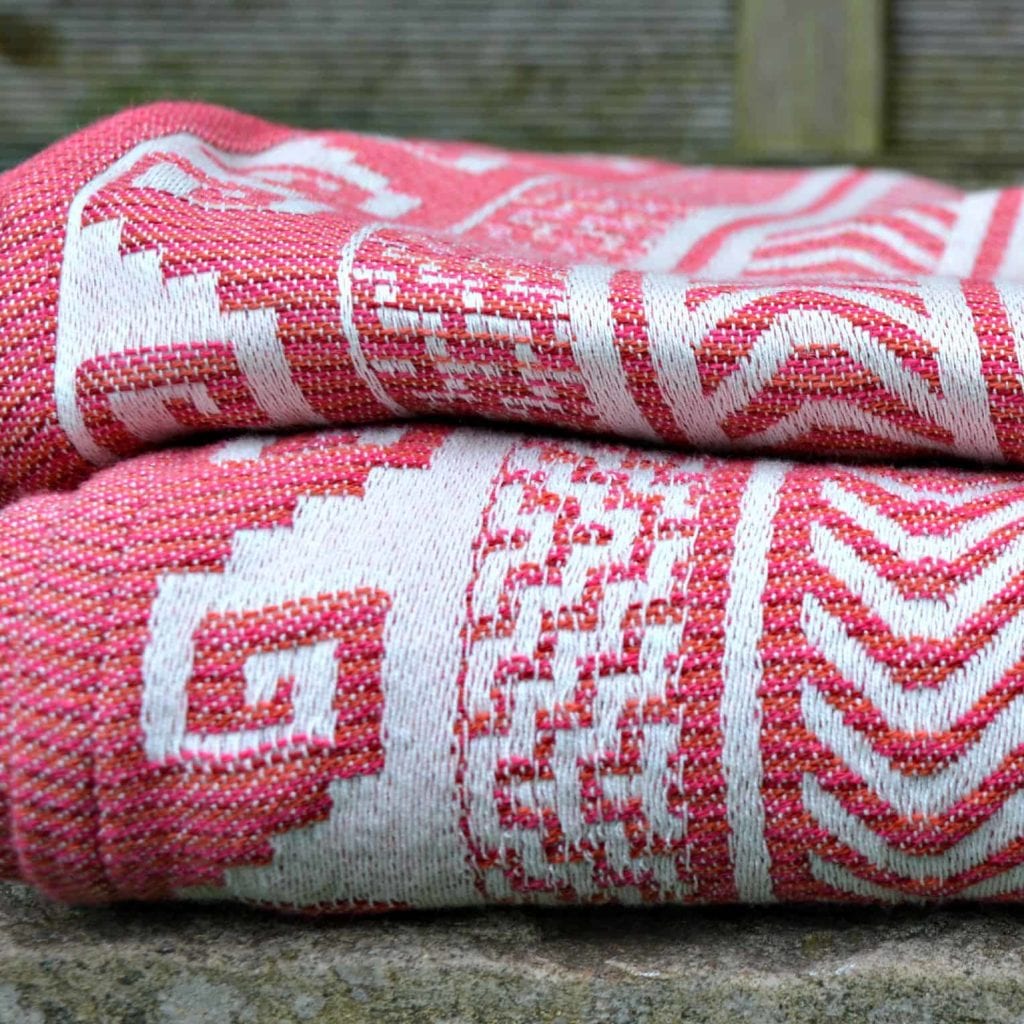 This is the unwashed wrap.
This is the unwashed wrap.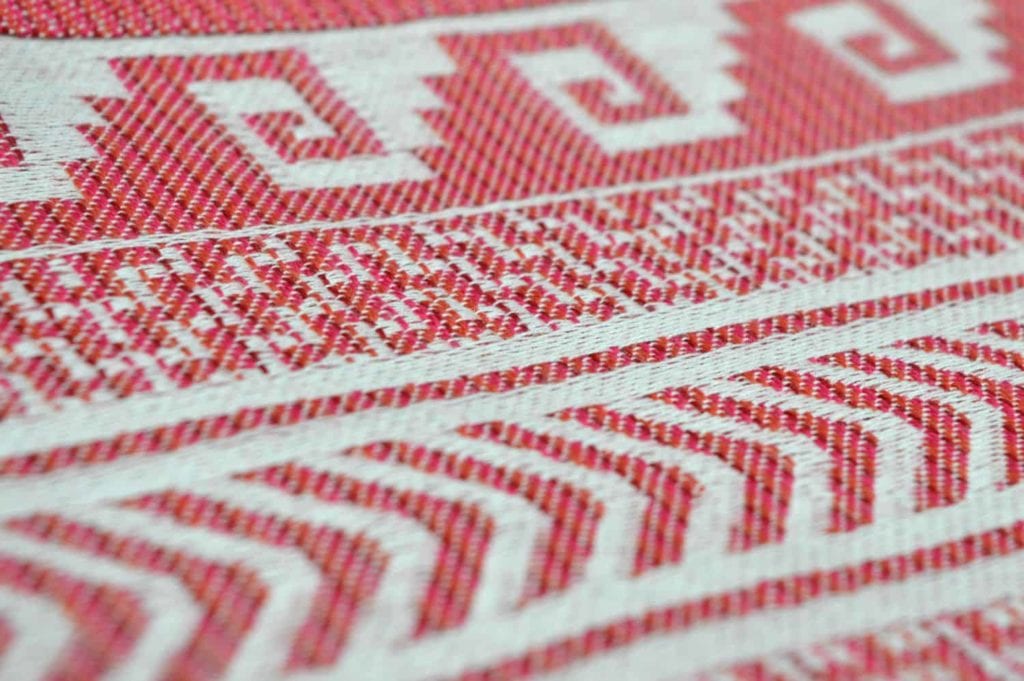 This is the washed wrap.
This is the washed wrap.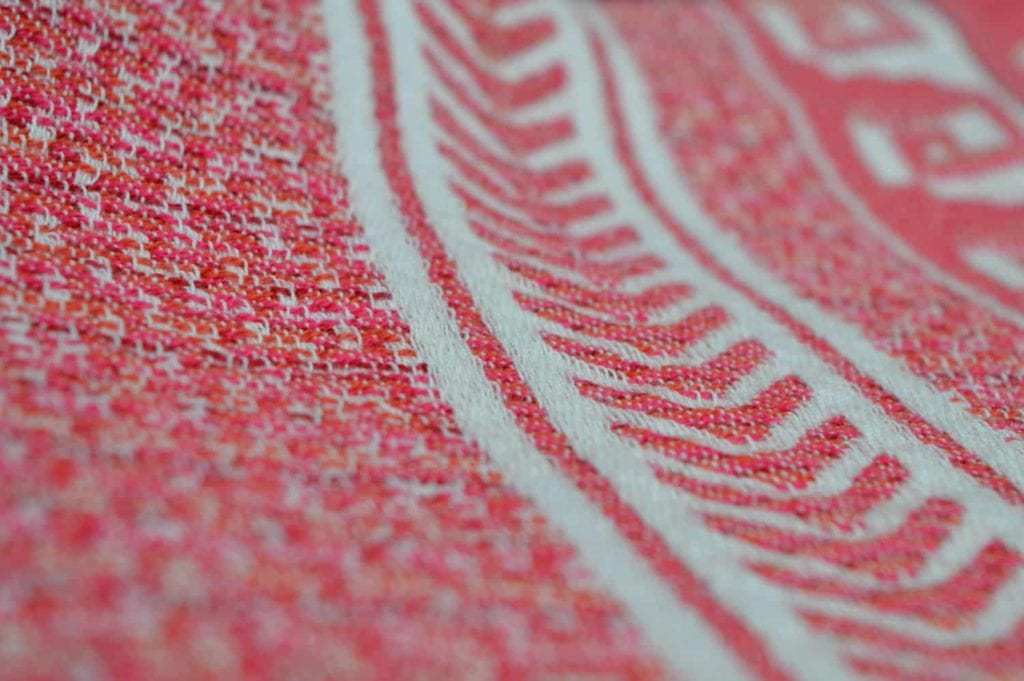 Loomstate Wool Wraps
Loomstate wool wraps can often feel a bit prickly or scratchy, and that is due to the natural processing oils that are used to make the wool workable on the loom. It can take two or 3 washes for those oils to be removed, but after that you should feel a remarkable change. The wool fibres are no longer pinned down flat and will take on a new, soft prominence in the cloth. Their colour and texture intensifies as they fluff up. As a community we are often over-anxious about felting, and can assume that the natural change of textures from loomstate is a bad thing, when in fact it is quite normal for wool cloth to bloom quite dramatically and feel ‘wooly’!
You can read more about the felting process here, but our general rule is that if you aren’t sure whether or not your wrap is felted, and you can still wrap with it, then all is well! When your wrap is catastophically and unusably felted, you know about it straight away! It actually happens very rarely, so go boldly to wash your woolies and enjoy them at their best…
Loomstate Linen Wraps
Linen yarn is made up of long fibres, and until those soften and yield to the fabric of the cloth they can cause creasing. Creasing is essentially those long fibres rebelling against the movement of the cloth and all clustering together in some areas, leaving others looking more empty. Loomstate cloth hasn’t set any rules for where its yarns should bond and live in position with their neighbours, and so some wraps will crease more on their first wash and may need more care to get them through that initial process. Once they all know their place and have settled in, the creasing will diminish or stop all together. The looser the weave, the more freedom loomstate threads have to roam!
Loomstate Wool Wraps
Loomstate wool wraps can often feel a bit prickly or scratchy, and that is due to the natural processing oils that are used to make the wool workable on the loom. It can take two or 3 washes for those oils to be removed, but after that you should feel a remarkable change. The wool fibres are no longer pinned down flat and will take on a new, soft prominence in the cloth. Their colour and texture intensifies as they fluff up. As a community we are often over-anxious about felting, and can assume that the natural change of textures from loomstate is a bad thing, when in fact it is quite normal for wool cloth to bloom quite dramatically and feel ‘wooly’!
You can read more about the felting process here, but our general rule is that if you aren’t sure whether or not your wrap is felted, and you can still wrap with it, then all is well! When your wrap is catastophically and unusably felted, you know about it straight away! It actually happens very rarely, so go boldly to wash your woolies and enjoy them at their best…
Loomstate Linen Wraps
Linen yarn is made up of long fibres, and until those soften and yield to the fabric of the cloth they can cause creasing. Creasing is essentially those long fibres rebelling against the movement of the cloth and all clustering together in some areas, leaving others looking more empty. Loomstate cloth hasn’t set any rules for where its yarns should bond and live in position with their neighbours, and so some wraps will crease more on their first wash and may need more care to get them through that initial process. Once they all know their place and have settled in, the creasing will diminish or stop all together. The looser the weave, the more freedom loomstate threads have to roam!
 Some wraps will only need one first wash in order for you to feel the difference, whilst other may need a couple of initial washes (e.g. wool often needs two or more washes to remove the natural processing oils and become lovely and soft). We send our wraps out in loomstate for you to wash at home rather than putting them through mechanical scouring and tenting (which would only do the same job as your washing machine would do). Wrap cloth doesn’t need any extra treatments to make it soft and suitable for purpose, and it isn’t treated with chemicals or agents. We use fibre reactive dyes that bond to the yarn fibres on a molecular level, so there is nothing to wash out of the cloth, other than the dust and dirt that it has collected on route from yarn cone to wrap.
Some wraps will only need one first wash in order for you to feel the difference, whilst other may need a couple of initial washes (e.g. wool often needs two or more washes to remove the natural processing oils and become lovely and soft). We send our wraps out in loomstate for you to wash at home rather than putting them through mechanical scouring and tenting (which would only do the same job as your washing machine would do). Wrap cloth doesn’t need any extra treatments to make it soft and suitable for purpose, and it isn’t treated with chemicals or agents. We use fibre reactive dyes that bond to the yarn fibres on a molecular level, so there is nothing to wash out of the cloth, other than the dust and dirt that it has collected on route from yarn cone to wrap.
 Weaving is a very dusty process; friction from the loom rubs off tiny natural fibres into the air, and static sucks them back into the cloth. Like all new fabrics, wrap cloth should be washed to remove this lint and dust.
The warp threads are stretched tight onto the loom, so that the weft can be passed from side to side through them all. Some of this tension is retained once the cloth is cut from the loom, the warp and weft threads remain taut and quite isolated from each other, with larger spaces between them all. When we see a wrap ‘bloom’ after washing, we are seeing the fibres all pull together to find their natural positions. Some of the length and width of the cloth is lost and converted into an airy thickness. We cut our wraps slightly longer than the desired length to allow for a little loomstate shrinkage on the first wash.
Weaving is a very dusty process; friction from the loom rubs off tiny natural fibres into the air, and static sucks them back into the cloth. Like all new fabrics, wrap cloth should be washed to remove this lint and dust.
The warp threads are stretched tight onto the loom, so that the weft can be passed from side to side through them all. Some of this tension is retained once the cloth is cut from the loom, the warp and weft threads remain taut and quite isolated from each other, with larger spaces between them all. When we see a wrap ‘bloom’ after washing, we are seeing the fibres all pull together to find their natural positions. Some of the length and width of the cloth is lost and converted into an airy thickness. We cut our wraps slightly longer than the desired length to allow for a little loomstate shrinkage on the first wash.
 Sunfade Cirrus Festival is an excellent example of why a wrap should be washed. When I received my sample wrap my first impression was that it looked beautiful, but felt thin and slippery. I was actually a little concerned that it didn’t feel like a Firespiral.
My next move was to put it in the wash, and after a line dry that I finished off in the tumble dryer, wow, what a difference. It is now so marshmallowy soft and airy and fluffy!
Here are a few photos of my size 7 (warp face out) , and an unwashed 7 (weft face out) for comparison. They are folded in exactly the same way.
Sunfade Cirrus Festival is an excellent example of why a wrap should be washed. When I received my sample wrap my first impression was that it looked beautiful, but felt thin and slippery. I was actually a little concerned that it didn’t feel like a Firespiral.
My next move was to put it in the wash, and after a line dry that I finished off in the tumble dryer, wow, what a difference. It is now so marshmallowy soft and airy and fluffy!
Here are a few photos of my size 7 (warp face out) , and an unwashed 7 (weft face out) for comparison. They are folded in exactly the same way.

 In this picture you can see the flatness of the cream warp threads in the unwashed wrap and the texture of the same threads in the washed wrap.
In this picture you can see the flatness of the cream warp threads in the unwashed wrap and the texture of the same threads in the washed wrap. This is the unwashed wrap.
This is the unwashed wrap. This is the washed wrap.
This is the washed wrap. Loomstate Wool Wraps
Loomstate wool wraps can often feel a bit prickly or scratchy, and that is due to the natural processing oils that are used to make the wool workable on the loom. It can take two or 3 washes for those oils to be removed, but after that you should feel a remarkable change. The wool fibres are no longer pinned down flat and will take on a new, soft prominence in the cloth. Their colour and texture intensifies as they fluff up. As a community we are often over-anxious about felting, and can assume that the natural change of textures from loomstate is a bad thing, when in fact it is quite normal for wool cloth to bloom quite dramatically and feel ‘wooly’!
You can read more about the felting process here, but our general rule is that if you aren’t sure whether or not your wrap is felted, and you can still wrap with it, then all is well! When your wrap is catastophically and unusably felted, you know about it straight away! It actually happens very rarely, so go boldly to wash your woolies and enjoy them at their best…
Loomstate Linen Wraps
Linen yarn is made up of long fibres, and until those soften and yield to the fabric of the cloth they can cause creasing. Creasing is essentially those long fibres rebelling against the movement of the cloth and all clustering together in some areas, leaving others looking more empty. Loomstate cloth hasn’t set any rules for where its yarns should bond and live in position with their neighbours, and so some wraps will crease more on their first wash and may need more care to get them through that initial process. Once they all know their place and have settled in, the creasing will diminish or stop all together. The looser the weave, the more freedom loomstate threads have to roam!
Loomstate Wool Wraps
Loomstate wool wraps can often feel a bit prickly or scratchy, and that is due to the natural processing oils that are used to make the wool workable on the loom. It can take two or 3 washes for those oils to be removed, but after that you should feel a remarkable change. The wool fibres are no longer pinned down flat and will take on a new, soft prominence in the cloth. Their colour and texture intensifies as they fluff up. As a community we are often over-anxious about felting, and can assume that the natural change of textures from loomstate is a bad thing, when in fact it is quite normal for wool cloth to bloom quite dramatically and feel ‘wooly’!
You can read more about the felting process here, but our general rule is that if you aren’t sure whether or not your wrap is felted, and you can still wrap with it, then all is well! When your wrap is catastophically and unusably felted, you know about it straight away! It actually happens very rarely, so go boldly to wash your woolies and enjoy them at their best…
Loomstate Linen Wraps
Linen yarn is made up of long fibres, and until those soften and yield to the fabric of the cloth they can cause creasing. Creasing is essentially those long fibres rebelling against the movement of the cloth and all clustering together in some areas, leaving others looking more empty. Loomstate cloth hasn’t set any rules for where its yarns should bond and live in position with their neighbours, and so some wraps will crease more on their first wash and may need more care to get them through that initial process. Once they all know their place and have settled in, the creasing will diminish or stop all together. The looser the weave, the more freedom loomstate threads have to roam!